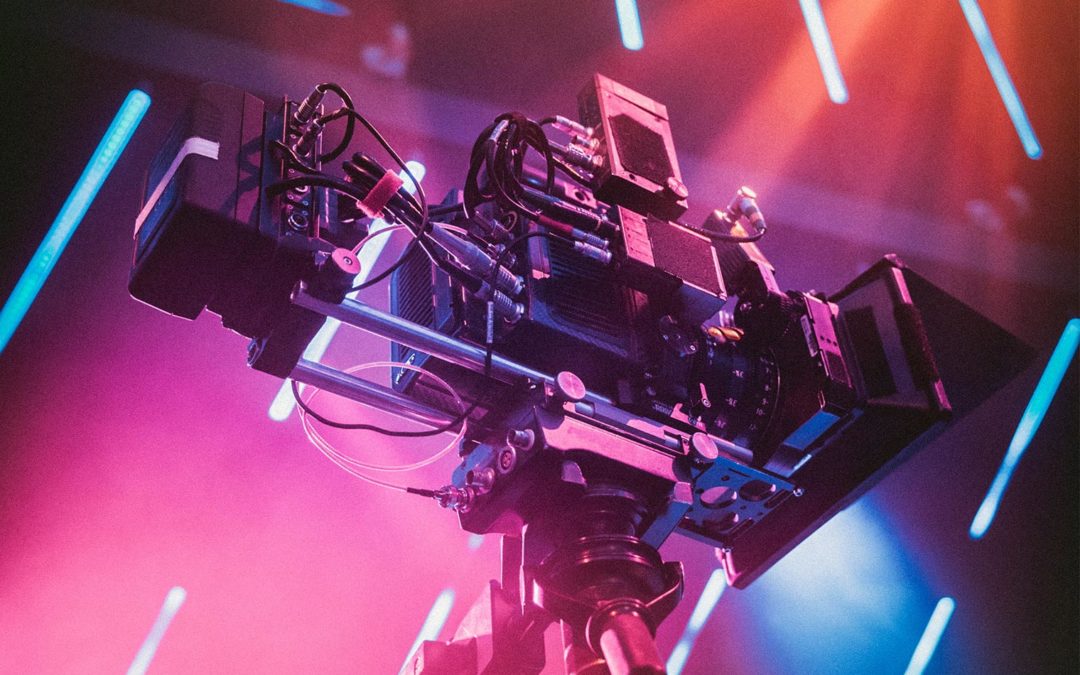
by Don Pingaro | Sep 21, 2019 | Commerce Strategy, System Integrations
Congratulations! You survived the Back to School retail surge. While the true test of eCommerce performance is yet to come, any hurdles you encountered during Back to School should be taken care of well before then. Consider these your warning shots. To help, here are 3 precautionary measures you can take to digitally strengthen your store for the holidays.
1. Stress Test to Avoid Lost Revenue
A wave of more than 6.2 billion shoppers will descend on digital retailers during Cyber Week. Unfortunately, not all businesses are prepared for success…
For example, J. Crew’s site crashed on Black Friday in 2018 and issues persisted throughout the afternoon. Analysts predict the outage cost the company around $780,000 in just five hours. Shoppers flocked to Twitter to complain en masse, causing a firestorm of anger to erupt across the web. This is where the real damage was done. Like a ghost story from holidays past, this is a warning for retailers everywhere to change for the better.

Redstage’s CEO Adam Morris identified the top “holiday rush” issues we’ve helped clients through in years past. Here’s what to watch out for:
1. Slow Site Speed
2. Price Caching
3. Broken or Buggy Checkout
4. Server Overload or Timeout
5. Add to Cart Features Failing
“The holidays are a time of increased profits, but that comes with a huge load on websites,” Morris says, “So if you haven’t done proper stress testing to account for higher demand, you won’t know how your online store is going to react.”Adam Morris, CEO at Redstage
Preparing for the worst now can save you money and your reputation later with one simple step— testing. Skipping this step could spell disaster that leaves the specter of poor service hanging over your reputation for years to come.

2. Your Back-End Checklist at Present
From Thanksgiving to Black Friday through the end of Cyber Week, retailers have a few critical days to rake in as many sales as possible. During this shopping frenzy customers both in-store and online. Regardless of how they buy, your online store (or your app) will more than likely be their first stop. We developed a checklist of what you can do today to ensure your eCommerce site survives Cyber Week.
- Optimize your site’s user experience with A/B testing.
- Check your indexing to avoid price caching.
- Review all error codes to avoid a broken checkout.
- Avoid overload and crashes by scaling your server.
- Double-check key functions to avoid important features failing.
- Complete load testing to prepare for an increase in traffic.
- Utilize an automated monitoring system for real-time updates on 404s and checkout errors.
- Upgrade your payments and security platforms to prevent payment fraud.
- Lastly, be prepared to scale up your support team on the fly. If something goes wrong, even for a few minutes, you’ll need a sizable support team to manage angry customers and correct the issues.
“If you’re not using visitor data to identify the friction points in your checkout, you risk focusing your budget in the wrong places. A data-driven approach to optimization means trusting your analytics even when the message is counter-intuitive.”Oliver Sosinsky, Sr. Solutions Engineer at Redstage
Learn a valuable lesson from LuLu Lemon. Last year, the athleisure brand’s site went down the morning of Thanksgiving Day. Shopper outrage hit Twitter at 8am EST with a “Site is down. Ugh!”
In the first minutes of the shopping event of the year, the brand was stuck, entangled in crisis. Once the site got back online, more errors appeared, causing sales prices for in-cart items reset to regular prices or prevent customers from checking out.
With proper bug monitoring and back-end preparations, this fiasco could have been avoided. Take a page out of our book and start monitoring now. You’ve done the legwork to bring customers to your site, now protect it.

3. Capitalize on the Future
A single visitor doesn’t guarantee a transaction and a single transaction doesn’t guarantee a loyal customer. Flawless mobile experiences will do both, but takes some serious testing.
Conversion rate optimization turns your visitors into customers while ensuring they receive an immaculate customer experience. While no two customers are the same, simple tests can lead to enhancements that remove friction from the checkout and dramatically reduce abandoned carts.
Merchants like LawnmowerTirestore.com took advantage of testing their site before the holiday season and the results were a game changer. By making their checkout button stick to the site’s header and follow users while they scrolled, sales soared with a 29.5% increase in revenue per visitor (RPV) for desktop customers. For mobile, the test yielded a 7% increase in RPV, after only 4 weeks of testing. Now, Lawnmower Tirestore plans to roll-out the feature site-wide to capitalize on their new-found data-driven advantage.
As part of the Mobile Optimization Initiative, retailers can receive checkout tests 100% free. The goal of the initiative is to create a set of best practices for mobile optimization and share our insight with the world. Read more about the initiative here.

Final Thoughts
According to Internet Retailer, 60% of consumers plan to spend 50% or more of their holiday shopping online; spending over $21.6 billion during Cyber week.
It is not too late to prepare. If you start early enough and cover all the bases, you can sit back, relax and watch your revenue grow with measurably less stress. Remember, this is your holiday too. While there’s still time, monitor your site for bugs, load test, A/B test, utilize the data, capitalize on those results, and enjoy some eggnog.
Cheers!

by Don Pingaro | May 4, 2018 | Press

Hasan Elkomey Takes Helm of Redstage’s Partner Channel
Redstage is pleased to announce the latest addition to our team and new SVP of Strategic Partnerships, Hasan Elkomey. As the former VP of Digital Transformation and Strategy at Damco, Hasan will drive Redstage’s partnership initiatives, leveraging his 15 years of insight to drive growth. Hasan’s experience working with complex organizations will help maximize value for clients as well as industry partners. Furthermore, the new SVP aims to accelerate company revenue by enhancing organizational efficiency and shepherding in the next wave of customer experiences.
About Hasan
Apart from Redstage, Hasan serves on Rutgers University’s board for the Center of Innovation — Design Thinking as the program’s Chairman. Over the years, Hasan has become known as an industry thought leader for his work fostering relationships with some of the world’s most recognized brands. He regularly speaks at digital industry events around the United States.
Read the full press release on PRlog.com.

by Don Pingaro | Jan 11, 2018 | System Integrations

Everyone’s asking, “What technology will have the biggest impact on marketing in 2018?” Will it be the illustrious AI, the illuminating abilities of augmented reality, or perhaps… chatbots?
With the emergence of all this new tech, marketers are left to base their budget allocation for 2018 on speculation. As a result, I am inclined to believe that without a doubt, 2018 will be somewhat of a plateau for marketing; defined by a knowledge-gap surrounding new avenues for advertising and the deteriorating value of current methods. Here’s why:
Marketing Tech in 2018

As we await the true advent of AI, AR, VR and Mixed Reality in the mainstream, contemporary digital advertising is rolling over and dying, with search, social and display ads experiencing a gradual decline in usefulness. Gen-Y and Gen-Z hate ads, and while pervasive multichannel messaging was previously a working strategy, ads are ignored now more than ever… and expansive ad campaigns are annoying customers, damaging brands.
The savior in this scenario was and still is video, which many companies lack the capability or know-how to properly leverage. Many still refuse any attempt to enter the video realm, despite annual marketing reports for the past decade marking video as the most effective channel for sales and brand engagement. Right now, the benefits of video seem to be buffering (pun intended), with numbers stagnating as users look for something new.
As a natural side-effect of the decline in channel efficiency, marketers have turned to big data as the new god to drive vertical engagement. However, many retail marketers lack the experience and/or artificial intelligence applications necessary to make sense of this wealth of data.
Getting a Grip on AI

This past year, we’ve seen the launch of some incredible remarketing software in eCommerce, like HiConversion and Rejoiner. Programs so powerful they can replace entire marketing teams that would typically manage the breadth of digital messaging (emails, ads, social, tracking, analytics, etc).
However… because these systems and the technology are so new, we’re combining the adoption curve with a learning curve. While marketers get a grip on machine learning Saas, I expect their true potential will be neither realized, nor their full impact felt in the market this year.
To make matters worse, today’s AI market focuses exclusively on predictive AI, which all-too-soon will be replaced with cognitive AI (Rajesh Sinha, Fulcrum Digital‘s CEO, predicts in the next two years). There’s a chance the change-over could immediately render predictive systems obsolete. On the other hand, retailers and brands can’t sit around waiting for cognitive AI, and those that do could see big-time losses (Hence the dilemma). Overall, what most of the martech world considers “AI” will soon be baked into every major software system available. What matters is how you use them.
Playing the Waiting Game & Winning

For now, we have to keep milking the avenues we have available. Optimize performance as much as possible with regard to channel strategy and be diligent. With the current pace of innovation, you might not get a second chance.
Now is the time for companies to start looking into how AR, AI, VR, IoT and other emerging tech can reshape business alongside other digital transformation strategies. While the long-term strategy teams focus on how they will deliver value in 2020 and beyond (when these technologies are expected to have much wider reach), it’s time to bring our websites into the new age. Maximize your site and sales funnels with every possible upgrade, build out content and bulk-up ad spend while we get over this hump. Rethink your strategy for the next four years and think seriously about how you plan to invest all the new martech. If you haven’t already made significant investments in your mobile customer experience, that’s a good place to start.
Some companies will spend a little more on ads to wait this out. Others will buy into expensive (soon-to-be outdated) platforms they’ll be stuck with long after the competition moves on. Unfortunately, the largest group will likely be those who sit on their hands and refuse to innovate. These will be the losers. Instead, find out how much budget you can pack into the time between now and 2020. Focus on your omnichannel experience and unifying your brand strategies with supportive AI products you can afford (for the short term). In addition, bulk up your ad spend, get some videos or podcasts going, and settle in for the long hibernation period ahead.
Final Thoughts
So let’s review. What technology will have the biggest impact on marketing in 2018? You, the human, which should be an empowering, albeit intimidating challenge for marketers. Lastly, remember, there’s no need to be discouraged. Plateaus are part of every high-growth process…
We just happen to be crossing the Rubicon.











Recent Comments